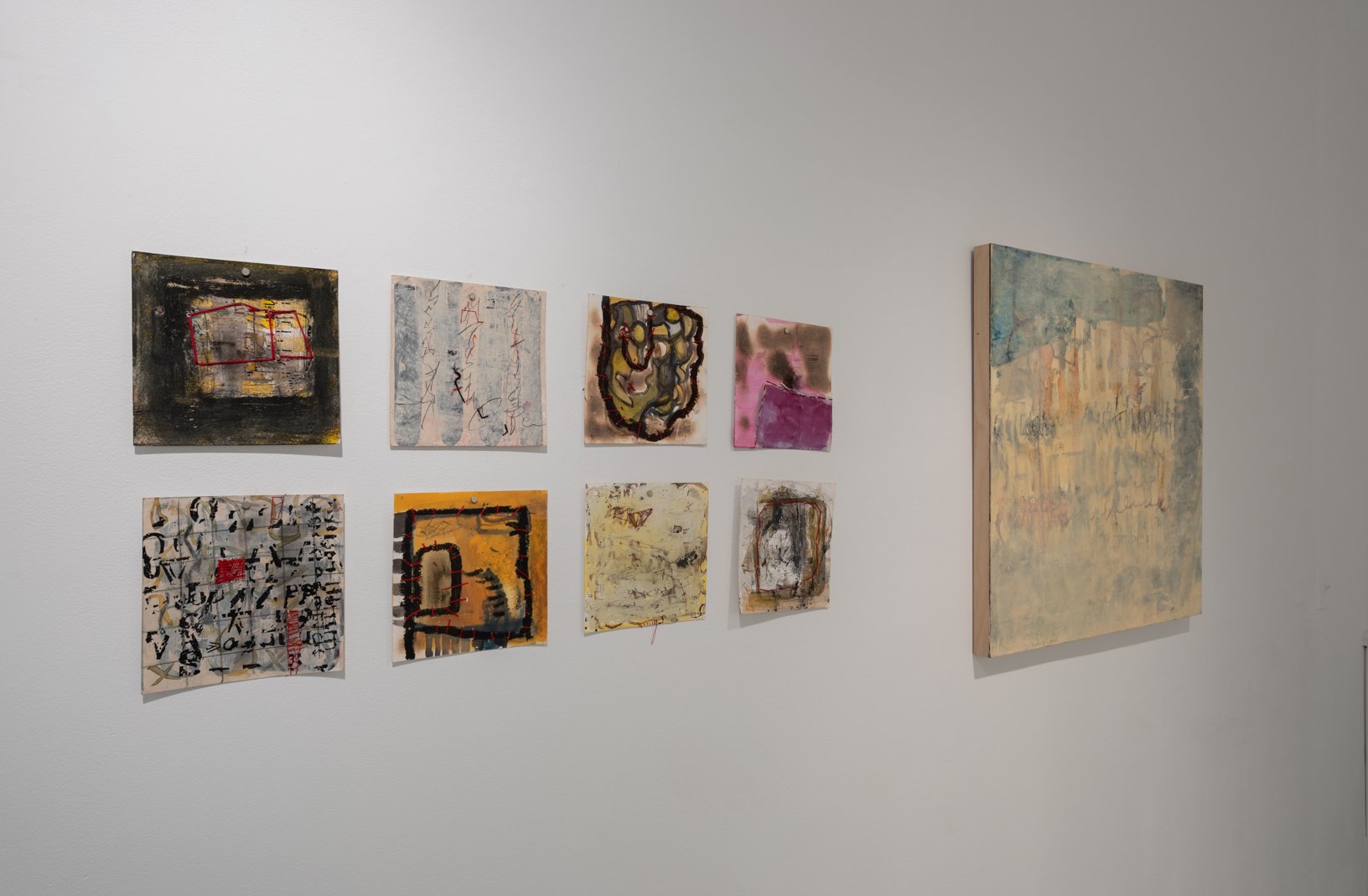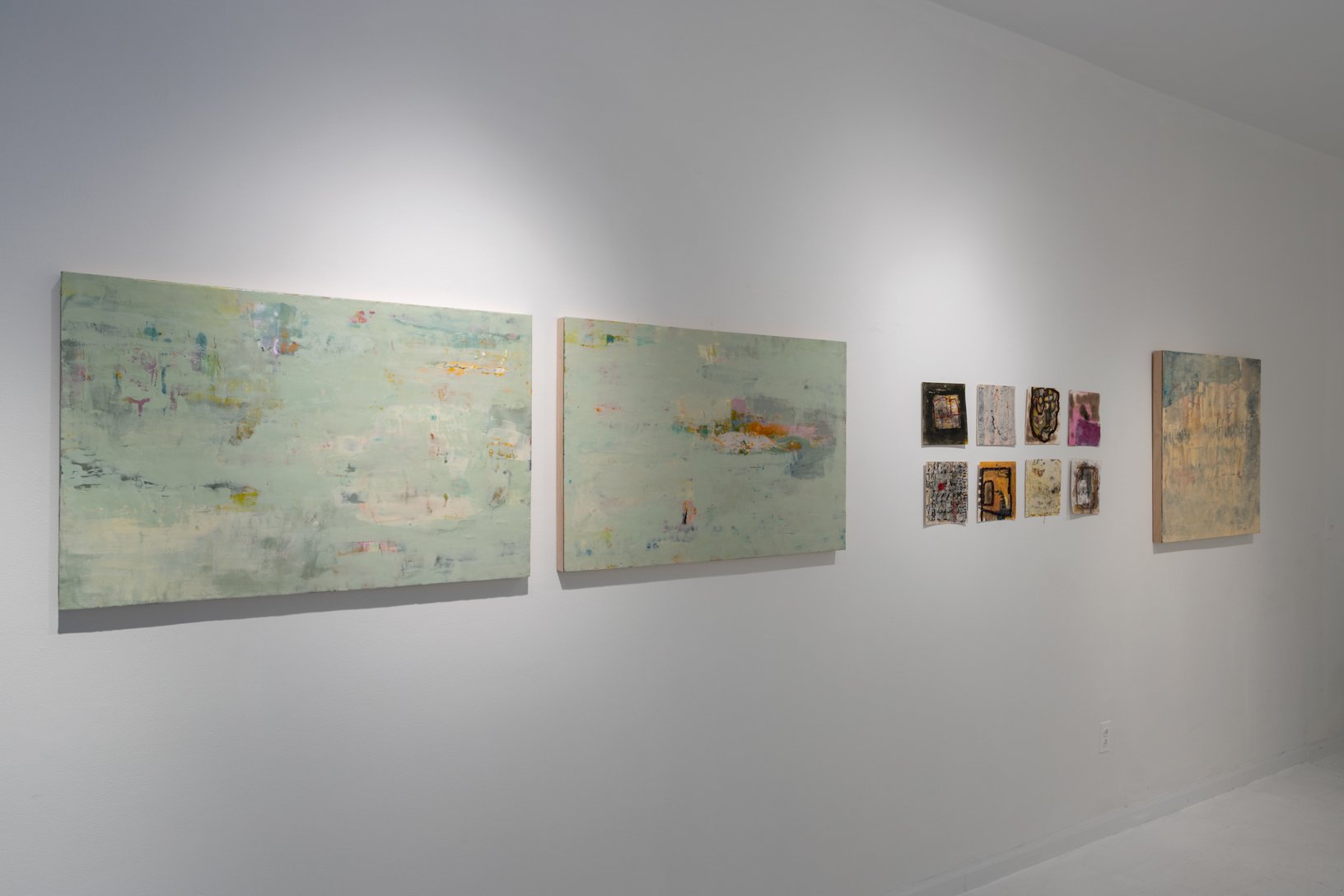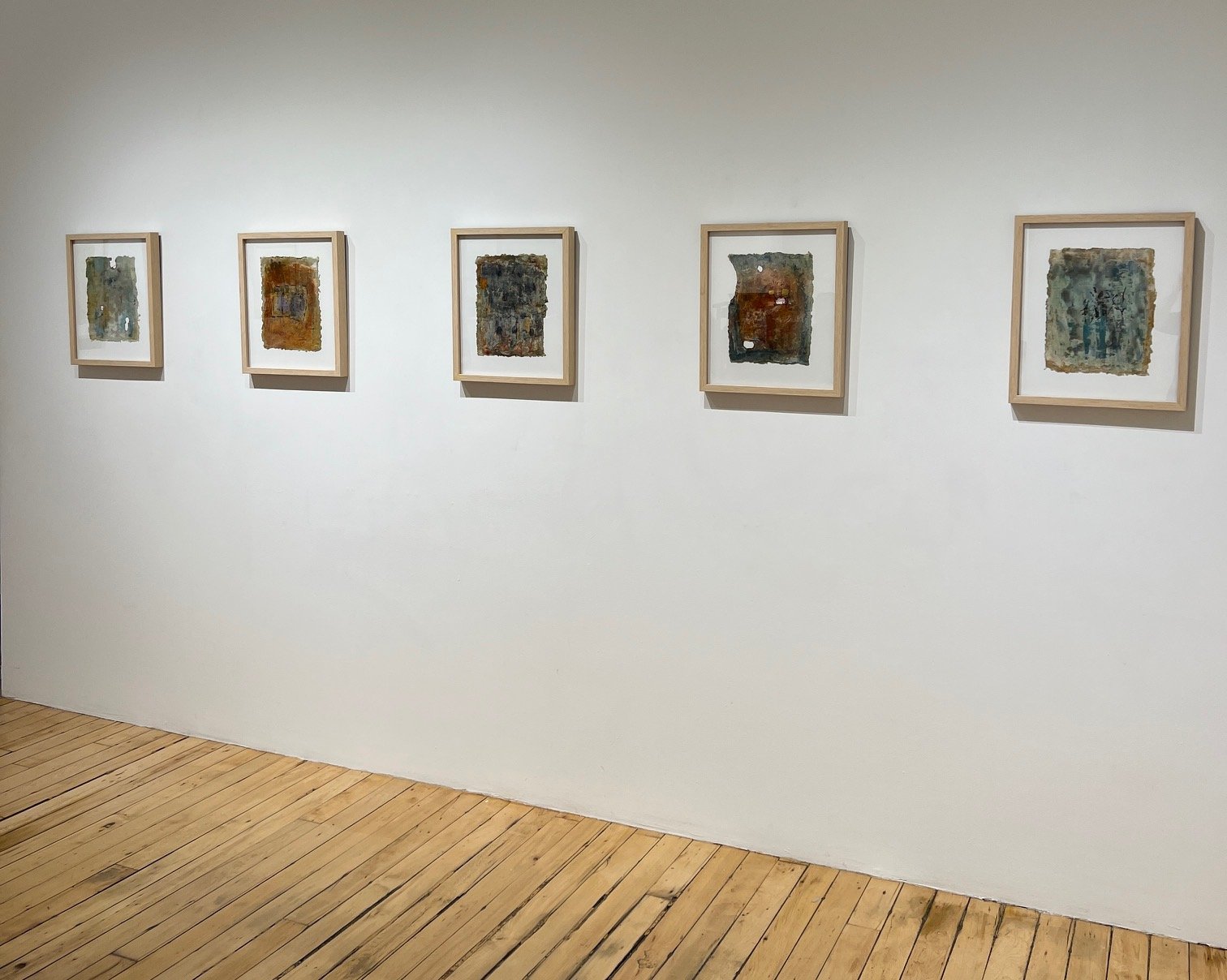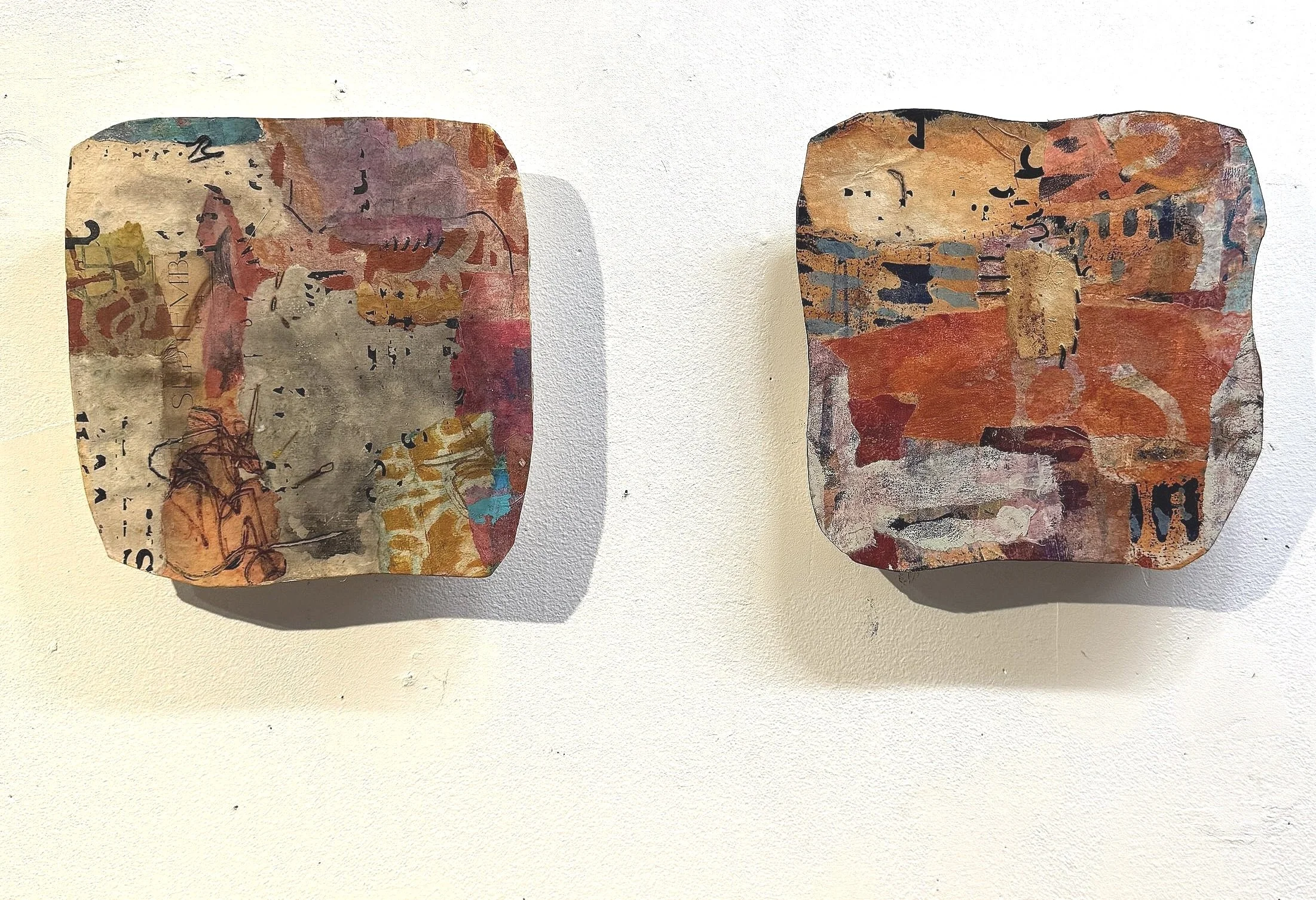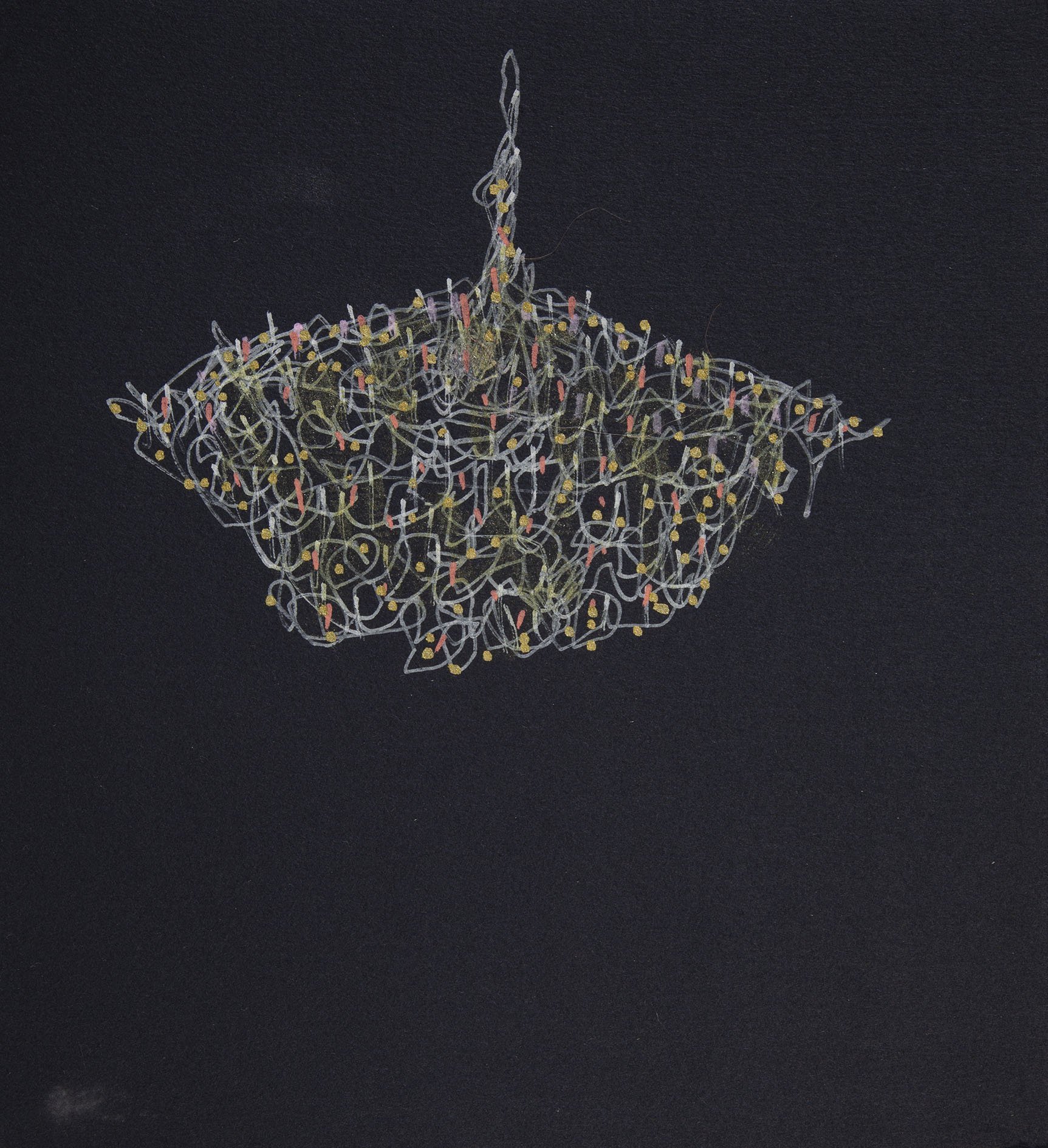New work in the Studio, May 2025
Biography
Lisa Pressman is a visual artist and educator whose abstract paintings explore memory, materiality, and transformation. Based in New Jersey, she works across encaustic, oil, cold wax, and mixed media, layering and manipulating surfaces through scraping, burning, stitching, and mark-making. These tactile processes reflect an ongoing engagement with themes of impermanence, grief, and the passage of time. Pressman's compositions often feature luminous color relationships, gestural energy, and excavated textures that evoke both ancient manuscripts and contemporary artifacts.
Her work invites close observation, revealing traces of language, symbolic marks, and richly worked surfaces that suggest both presence and absence. Since the loss of her son in 2019, her material choices and rituals—burning, sewing, layering—have become deeply connected to mourning and memory. Each painting becomes a meditation on what remains, where discovery unfolds through process and perception.
Pressman earned her MFA in Painting from Bard College and a BA in Fine Arts (Ceramics and Sculpture) from Douglass College, Rutgers University. She has exhibited widely in solo and group exhibitions across the U.S., including at Susan Eley Fine Art (New York and Hudson, NY), Addington Gallery (Chicago), The Painting Center (NYC), Causey Contemporary, and R&F Handmade Paints. Notable solo shows include Messages (2023), Downtown Debut (2022), and Passing Through (2015). Her work has also been exhibited internationally and appears in numerous corporate and private collections, including Hyatt Regency, McKinsey Financial, Omni Hotels, and Sun Chemical Corporation.
In addition to her studio practice, Pressman is a sought-after educator and workshop leader, teaching nationally and internationally at universities, art centers, and conferences, including The International Encaustic Conference (Provincetown, MA), where she has also curated and presented digital studio tours. She has served as a juror and curator, most recently for The Blue Show at The Painting Center (NYC) and Sense of Place at Monmouth University.
Her work has been featured in Cold Wax Medium by Rebecca Crowell and Jerry McLaughlin, the Huffington Post, Art Speak, and the Philadelphia Inquirer, among others.
She is represented by Susan Eley Fine Art (NYC and Hudson, NY) and Addington Gallery (Chicago).

The notion of what lingers beneath the surface is a driving force in her practice. Language appears in glimpses—familiar yet unreadable, dissolving into gestures. The marks she creates exist in a space between recognition and obscurity, emphasizing the fluid nature of memory and perception. Her compositions suggest containment yet resist definitive interpretation, inviting viewers into a quiet, open-ended dialogue of discovery.
The death of her son in 2019 profoundly influenced Lisa’s work, deepening her relationship with materiality. Burned marks, red-thread sutures, and layered surfaces became both acts of remembrance and reconstruction, embodying the resilience of transformation. Through layering and excavation, her work become meditations on what remains, marking time in a way that feels both intimate and universal.
“Her work is emotionally intense, laden with the acute joys and sorrows that can only be accessed through profound suffering. She shares her journey with a deep generosity of spirit, and we want to travel with her, knowing that on some level it’s our journey as well.”
Meg Hitchcock, In the Studios blog
Lisa Pressman: The Alchemy of Process
My work is an ongoing excavation of memory, emotion, and materiality—an intuitive journey where surfaces accumulate layers of history. Each mark I make is a response to time, revealing and concealing fragments of experience. Working with encaustic, oil, cold wax, and mixed media, I embrace the tactile quality of my materials, allowing them to guide the evolution of each piece.
Shapes emerge like artifacts, evoking vessels of containment yet resisting clear definition. Fragments of language appear and dissolve, becoming gestures rather than concrete messages. The layering process is not just a structural technique—it is a metaphor for the shifting nature of memory, where presence and absence coexist, and meaning is constantly in flux.
Loss and impermanence are central to my work. The loss of my son profoundly deepened my relationship with materiality, making each act of burning, stitching, and scraping a ritual of remembrance. These marks, whether erased, concealed, or revealed, speak to the fragility of existence. My paintings become meditations on what remains, an ongoing dialogue between transformation and continuity, exploring how time reshapes both material and memory.
Visually, my paintings feature rich textures, intense gestural marks, and dynamic color relationships. My non-dominant hand pieces blend lyrical color elements with neutrals, incorporating expressive mark-making. Light emerges from the layers, creating a luminescent quality that has remained a defining aspect of my work throughout my career. Excavated surfaces reveal hidden forms, evoking the process of archaeological discovery—bits of information emerging gradually, ultimately revealing a larger narrative. Lines and symbols in my compositions suggest a personal language, particularly in my "Messages" series, where they take on an almost hieroglyphic quality. Some works lean into dramatic contrasts, while others are more subtle, inviting an emotional engagement that extends beyond the immediate surface.
My process is rooted in both intuition and reflection. I do not seek to impose definitive narratives but instead invite contemplation. My paintings hold the residue of experience, asking viewers to engage with what is visible and what lingers beneath the surface. Each piece carries its own quiet history, waiting to be interpreted anew with every encounter. The act of layering, removing, and rebuilding is a way of making sense of what is lost and what is carried forward.
Ultimately, my work is about discovery—uncovering meaning through process, gesture, and material. In this continuous cycle of creation and erasure, I explore the tension between permanence and change, allowing each piece to exist in the space between knowing and mystery.


